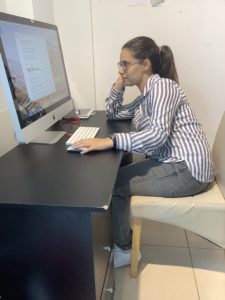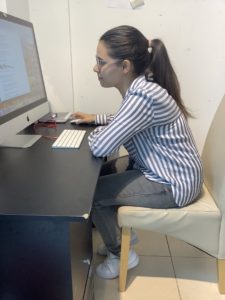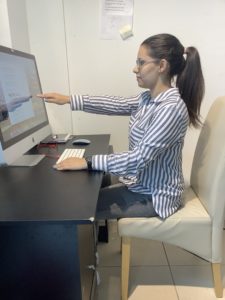


Our body has been designed to be in motion. If you stay sitting for prolonged periods of time, that could have some consequences; especially, for those who have a desk job and are more prone to suffer lower back pain. The main reason for this problem is that people do not have the correct posture while they are working at a desk and in front of a screen. If you want to learn how to prevent that problem keep reading.
In an article written by Dr. John Triano, it is explained that “a static posture increases stress in the back, shoulders, arms, and legs, and in particular, can add large amounts of pressure to the back muscles and spinal discs”. One of the aspects which is very important to take care is: the chair.
An ergonomic office chair will help to avoid back pain as it can help to support the back more efficiently. Nevertheless, if the chair is not adjusted properly the problem will remain. The NHS advise to get one chair which could be easily adjustable so you can change the height, back position and tilt. Your feet should be flat on the floor, if that is not possible or you can use a footrest. Your screen should be at your eye level and the keyboard straight in front of you. All the objects that you need within reach (the mouse, pens and pencils) should be close to you in order to avoid a bad posture or movements of your back. Dr. Burr points out that elbows and knees should be at 90 degrees. Also, he suggests using a back support in a chair in order to increase the lumbar support and to maintain the natural curve of your low back. If you do not have lumbar support feature you can purchase one or use a cushion or a rolled up towel.
Moreover, it is essential to take breaks to stand, stretch and walk at least for one minute intervals throughout your working day. Dr. Triano explains that “a twenty minute walk will help even more, promoting healthy blood flow that brings important nutrients to all the spinal structures”. In one study it was concluded that “exercise intervention programmes involving either muscular strength, flexibility or aerobic fitness is beneficial for non-specific chronic low back pain”. For that reason, it is a good option to do exercise to avoid back pain. One of the disciplines that specialists recommend is Pilates because it combines stretching and abdominal exercises. So if you haven’t already, come see us!
Diana Giambona
